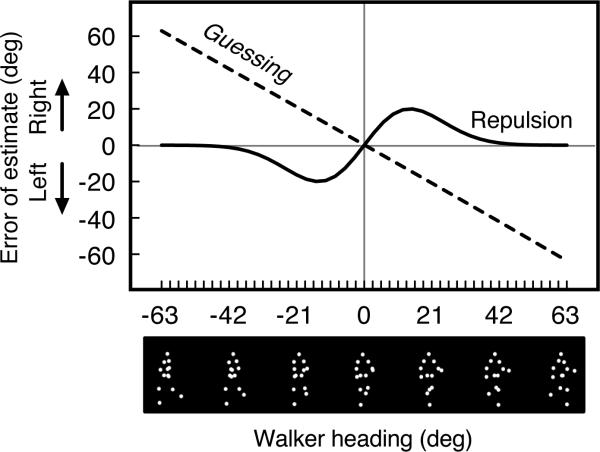Fig. 1.
Patterns of response variability that could arise from cognitive or response biases, or from reference repulsion. If an observer were to randomly select a response heading on every trial, the pattern of response errors (dashed line) would decrease linearly and flip from rightward to leftward errors at the approaching heading. If an observer responded accurately, the magnitude or sign of response errors should not change across the range of test walker headings. If an observer categorically perceived the heading of the test walker and perceived a repulsion effect, response errors should resemble an s-shaped pattern around the category boundary, with the magnitude of exaggeration approaching zero at extreme headings (consistent with the derivative of a Gaussian function, solid line).

